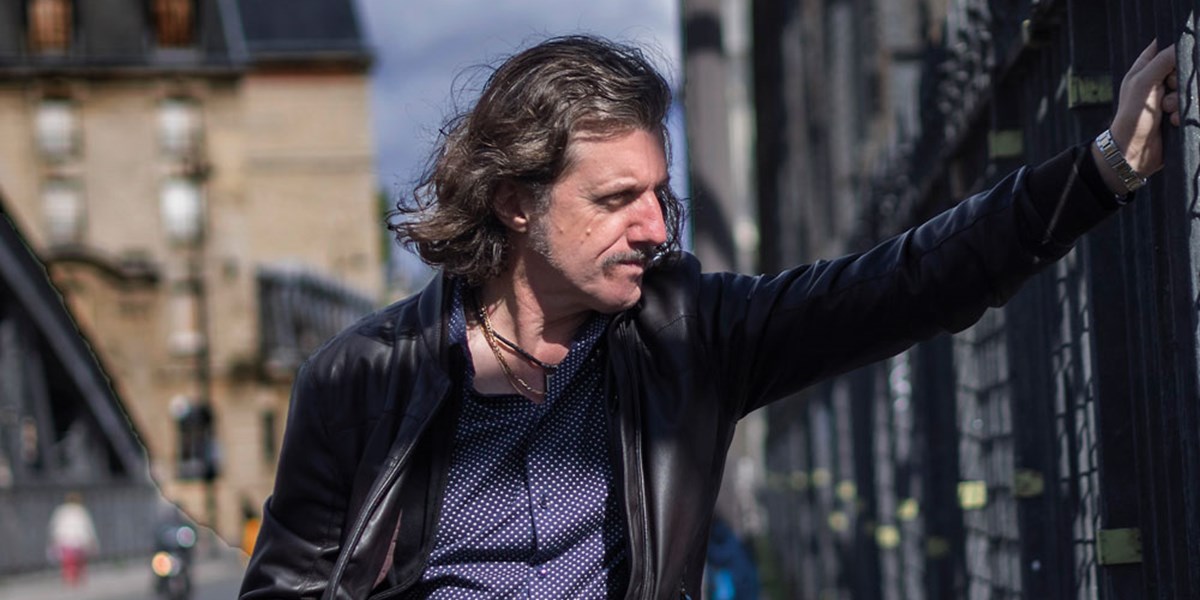Tuesday, April 30, 2019
Thierry ‘Titi’ Robin: A Beginner's Guide
By Jo Setters
Jo Setters examines the career of the visionary French multi-instrumentalist who has been experimenting for over 30 years

‘Thousands of times I’ve dived into this bottomless river, but it’s in a little pool of water that I found the precious pearl.’ This line from a qawwali, cited by Thierry ‘Titi’ Robin, captures how, for him, it’s the intimate, personal moments that inspire music, not the endless rushing past of the cosmopolitan current. It perfectly reflects how he has developed his personal approach to music. Listening to him will bring to mind many influences; there are strong traces from the north and south shores of the Mediterranean, and there are footprints from the migratory route of the Gypsies, originating in northern India. But instead of receiving postcards from abroad, it is from the people in the streets around him, many of them non-musicians, that Titi Robin has developed a style that is both unique and entirely personal.
Born in western France in the late 50s, he cites the flamenco singer Camarón de la Isla and Iraqi oud player Munir Bachir among his main early influences. However, he has never tried to imitate either musician. Instead it was rubbing shoulders with gitan (Gypsy), Arabic and other communities that influenced him as he taught himself to play the guitar, bouzouki and oud. This idiosyncratic but distinctive approach was evident from his first performances. He recorded a duo of lute and tabla (since deleted) and then formed the group Johnny Michto. Combining electric bouzouki, bass, clarinet and bagpipes with Moroccan rhythms, the band left the general public in 80s France perplexed, but they were well received among the North African community.
Then in 1993 he burst into the consciousness of what was becoming the ‘world music’ community with his album Gitans. With clear influences from Andalucía, the Balkans and North India and a line-up that includes accordion, tablas, clarinet and bagpipes as well as guitar and vocals, it shone a light on just how varied Gypsy music can be. It was also his first recorded collaboration with the Rajasthani singer and dancer Gulabi Sapera, whose voice and choreography would accompany him for years. This association would produce many fruits, including the jointly-signed album Rakhi in 2002, as well dance and music spectacles. It even resulted in a book, written by Robin that chronicled Sapera’s story from her life as a young girl in poor, nomad camps to her international recognition as a performer.
This album also unveiled Robin’s fully formed style. The elements in it are diverse, and some are easily recognisable: there’s a touch of flamenco, a Balkan Gypsy flavour, Arabic essences and Indian rhythms. Plus, there’s something almost indefinably French underscoring it all. However, there is no preconceived ‘fusion’ here; it’s an entirely original sound that Robin has created from the character and vitality of the people around him. It’s a mixing of bloodlines rather than a marriage of convenience.
More than anything, perhaps, Robin’s style has a whole-hearted vitality and directness. It sounds spontaneous, as if it were improvised on the spot; sometimes it is. There is nothing ever staid or over-rehearsed here.
This is the sound that has defined Robin’s music as he has toured globally, both on the festival circuit and far from the beaten track, and it has been recorded on another 16 albums so far. On each album he has explored a different facet of his style and explored his abundant influences. A highlight is Un Ciel de Cuivre from 2000, which has a huge range of invited musicians and singers but still manages to sound like an intimate get-together. Another is Kali Sultana: L’Ombre du Ghazal from 2008, a suite of seven movements, mixing improvised and composed music with string accompaniment inspired by ghazals.
➤ This article originally appeared in Songlines #135. Find out more about subscribing to Songlines
As his journey continues, Robin has expressed his disquiet at how much of ‘world music’ takes from sources in the developing world. “Western musicians normally go in search of music in the South or in the East in the way others have gone in search of oil,” he has said. To counter this, Robin set out on a huge project that culminated in the triple-album Les Rives (Riverbanks in English). The three discs were each recorded separately, with local musicians, in local studios and produced by a local record company, one in India, one in Morocco and the other in Turkey. The individual albums were first released in their respective countries at local prices. Only later were they brought together in a box set.
Artistically restless, he continues to seek new modes of expression. His latest project is Rebel Diwana released in March. This time he has picked up an electric guitar and combines a rock sound with the bowed sarangi and Indian vocals, to produce a mesmeric reverberation of music and poetry.
Robin is probably the most original French guitarist since Django Reinhardt. He has created a style of playing and composing that is instantly recognisable. Far from being an eclectic musician on the margins of other genres, Robin is one of the few contemporary musicians to have truly imagined, and remained at the centre of, his own creative universe.

